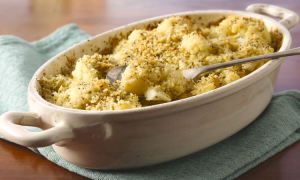
Chlorine is an essential component of maintaining a sterile pool surroundings and proper pool chemistry. It may be challenging to balance your pool chemistry, and there’s such a thing as”a lot of chlorine” Luckily, an excessive amount of chlorine in your pool is readily corrected. Keep reading to find out more about why the suitable chlorine level is essential for your health and safety and the best way to decrease the chlorine in your pool efficiently.
What’s the Chlorine Level within my Pool Too High?
An over-chlorinated swimming pool is a frequent dilemma for pools. Most manufacturers recommend shocking that the pool once you start your pool every season. Shocking the pool means incorporating additional chlorine to the water to get rid of surplus algae, bacteria and other germs out of the pool.
Should you miscalculate and include more pills or granules than mandatory throughout the shocking process, or through regular maintenance, this may lead to a high contamination level. An over-chlorinated pool may have a lot of negative health consequences.
Hazards of Over-Chlorination
While marginally higher-than-normal levels of chlorine in your pool are benign, vulnerability into an over-chlorinated pool may have adverse effects on your wellbeing and well-being. Surplus chlorine may change the pH level of the water at the pool, which makes it more acidic. The acidity levels can cause some of the following symptoms:
Irritant dermatitis, That’s a reddish skin rash characterized by elevated itchy red bumps
Eye irritation and over-dilated blood vessels in the uterus
Asthma and respiratory disease because of excessive chlorine vapor on the surface of the pool
Respiratory problems usually occur after prolonged exposure to over-chlorinated pools, which leads to the lymph nodes to become sensitive to chlorine. The majority of these symptoms clear up on their own without needing treatment in a couple of days to a week.
Although very rare, intense over-chlorination may also bring about chlorine poisoning. The signs and symptoms of chlorine poisoning include:
Nausea and vomiting
A burning sensation in the throat
Dizziness
Wheezing and shallow breathing
Persistent coughing
Tightness or pain in the chest
In the event that you or anybody else that has used your swimming pool experience these signs, speak to your healthcare practitioner immediately if treatment is required.
Extreme pH changes may also affect the way the chlorine functions on your pool. Chlorine works most effectively in water using a neutral pH level between 7.4-7.6. If the pool is too bloated, or more compared to a pH of 8.0, the efficacy is less than 20 percent. A pH that’s too low or high may also harm pool equipment, landscaping features, clothes, towels and swimsuits. It’s crucial to bring the right quantity of chlorine to your pool to keep up the ideal pH level. You may examine the pH of your swimming pool using a very simple pH strip evaluation.
If you are continuing to fight balancing the acid and acidity on your pH levels, decrease your pH levels with the addition of sodium bisulfate or muriatic acid. To increase your pH levels, it may be as easy as incorporating seven to eight pounds of baking soda to a pool water. Pool providers provide big containers of baking soda for pool pH balancing.
The Way to Tell if Your Pool Has Too Much Chlorine
The chlorine in the pool consists of two kinds of chlorine chemicals. Free chlorine is the”great” form of chlorine that’s available to get rid of bacteria and germs. Mixed chlorine, also referred to as chloramines, is what happens after the chlorine has united with organic matter (like bacteria) and is responsible for its characteristic odor associated with chlorinated pools.
In contrast to popular belief, you can’t smell how much contamination is on your pool. Dry hair, sensitive skin and irritated eyes are indicators of an over-chlorinated pool, however there’s a less inconvenient and safer approach to learn whether your swimming pool has too much chlorine.
DPD testing kit steps combined and free chlorine levels to provide a whole chlorine count. You might also use an OTO kit, however this just measures the free chlorine available on your pool. These kinds of titration tests would be the most accurate way of specifying the chlorine levels in your swimming pool and also allow you to assess how to decrease the chlorine levels in your pool if needed.
To utilize the DPD testing kit, then measure out a little bit of pool water and then include buffered DPD powder into the water, which turns pink. Then put in a technical FAS chemical one drop at a time before the water transforms from pink to clear. Each fall of FAS chemical is equal to 0.2 ppm of chlorine.
The CDC urges the perfect chlorine degree for your home made pool is between three and one ppm. If the DPD testing kit suggests that the chlorine amounts of your own pool are greater than ordinary, there are numerous methods to lower it.
Tips to Lower the Chlorine Level On Your Pool
The way you use to reduce the chlorine levels in your pool is dependent upon the concentration of the chlorine.
1. Quit Adding Chlorine and Begin Swimming
For chlorine dimensions just marginally higher than the suggested chlorine concentration, lowering chlorine levels in your pool can be as simple as not adding chlorine to your pool.
Switch your chlorine feeder, eliminate the chlorine floater in the pool or eliminate chlorine pills from the skimmer. Abating the continuous influx of chlorine in your swimming pool permits the chlorine now from the pool to get used. Swimming at the pool will help accelerate this process because the chlorine functions to get rid of the germs introduced by the squirrels.
2. Utilize the Sunshine
A fast and effortless method to dissipate chlorine in your pool would be to make the most of a hot, sunny day. Uncovering your swimming and also exposing the water to direct sun for at least 2 hours can decrease pool chlorine levels up to 90 percent. The UV rays react with free chlorine to make chlorine gas, which can be released into the air.
To try out this system, stop chlorinating your own pool and continue to track the chlorine levels to make certain they do not fall below 2 ppm. As soon as they achieve this amount, restart routine chlorination to sanitize your pool.
Should you use cyanuric acid on your swimming pool, this method might be less successful. Cyanuric acid can be used as a chlorine stabilizer to assist the chlorine in your pool longer.
3. Heating the Pool Water
Temperature can indirectly alter the chlorine levels of the swimming water. A rise in temperature causes bacteria to proliferate, which utilize more of this chlorine.
In case you’ve got a heated pool, consider increasing the temperature of the pool to 90°F–10°F over the recommended amount –for a brief period. Proceed to monitor chlorine levels through the day.
4. Dilute the Pool
To whiten your pool water, then partly drain the pool and top it up with new water. This method has many disadvantages compared to other chlorine lowering hints.
Draining and refilling your swimming pool requires a whole lot of time. Lower the amount of time that it takes to empty the pool by backwashing in the event that you have sand or DE filters. Diluting the pool water may also significantly boost your water bills, based upon the municipal water prices in your town.
Additionally, it interrupts the pH level and water hardness of your swimming pool, which you’ll have to track and attentively readjust once you complete diluting the pool.
This method may be fantastic alternative for pool owners that also should take care of a obstructed sand filter, an elevated total dissolved solids degree or surplus copper or cyanuric acid.
5. Use Hydrogen Peroxide
Hydrogen peroxide is a potent oxidizer and reacts with chlorine to produce oxygen and water. It’s working in the event that you become aware of little, effervescent bubbles at the pool.
For the best results, use hydrogen peroxide that’s formulated for pools. This product has a greater concentration of hydrogen peroxide compared to products used for cleaning your property.
Hydrogen peroxide works most efficiently at pH levels greater than 7.0. Before utilizing this product, check the pH of the pool and then adjust the amounts to make sure that the hydrogen peroxide gets rid of excess chlorine efficiently.
6. Utilize a Chlorine Neutralizing Product
There are lots of chlorine neutralizing products available on the marketplace which are especially formulated to decrease the total amount of chlorine in your pool without disrupting the pH, alkalinity or water hardness degrees. Insert the neutralizer slowly to avoid removing too much chlorine and having to readjust the levels .
Based on the degree of chlorine within your swimming pool, you might have to use a number of remedies to reunite the pool into a secure level for swimmingpool.
7. Try out Sodium Thiosulfate
Sodium thiosulfate is an inexpensive choice to pre-formulated chlorine neutralizing products. The sum you want to include is dependent upon the amount of gallons of water from your pool along with the first chlorine level.
The very best method to add sodium thiosulfate into the swimming pool is using a pool skimmer. As sodium thiosulfate stays in the water till it’s responded with the chlorine accessible, it’s easy to overshoot the mark and eliminate an excessive amount of chlorine. Begin by adding half the recommended amount per the manufacturer’s directions. Then, test the chlorine levels before adding more.
Test the pH of the pool following therapy with sodium thiosulfate. The chemical reaction with the water and chlorine enhances the entire pH of the swimming pool, which may help it become overly acidic.
For pools with eucalyptus oil, keep in mind that in the event you utilize a compound strategy to neutralize the chlorine in your pool, the cyanuric acid level will remain the same. If you insert stabilized chlorine back in the pool to restart sanitizing the pool, then this raises the cyanuric acid level farther and changes the pH level of the water. Carefully track the degree of cyanuric acid and the pH after completing any neutralizing therapy.
Alternative Pool Sanitizers
For those who have sensitive skin or don’t enjoy using chlorine in your pool, then there are numerous alternative pool sanitizerproducts accessible to stop algae and bacteria from building up on your pool. These choice sanitizing products permit you to significantly lower the quantity of chlorine you are using on your pool and lessen the danger of over-chlorination.
Nature2 CF
Nature2 CF is a vitamin sanitizer which uses minerals, usually silver and aluminum, to respond with the pool to discharge positive ions. These positive ions ruin negatively charged organic matter such as bacteria, body oils and algae.
The Nature2 CF cartridge works with your pool’s existing filtration system also features controlled release technologies to maximize nutrient amounts in your swimming pool. This product not only helps sanitize your pool, but it may also improve the sense of the water.
Natural Chemistry Pool Perfect
Organic Chemistry Pool Perfect is a excellent way to match chlorine corrosion using enzymes to break down organic matter from the pool , allowing it to dissipate better. Pool Perfect also comprises chemicals to decrease the phosphate levels in your pool which may boost the probability of algae development.
United Chemical No Mor Problems
No Mor Problems is intended to work synergistically with all the chlorine in the pool. The particular formula divides chloramines and lowers the requirement to add extra chlorine back in the pool. Additionally, it functions to describe your pool water and purge filters to accelerate filtration occasions. No Mor Problems is likewise an algaecide, meaning that it removes algae and prevents regrowth. On top of that, it’s totally biodegradable and non-toxic, therefore it’s safe for the loved ones.
Last Ideas
Maintaining your pool chemistry inside the ideal limits provides a much more enjoyable swimming experience along with a longer-lasting pool. Should you chance to over-chlorinate your swimming pool, there are lots of straightforward methods to neutralize the chlorine and also stop any negative health consequences.
To find out more about spa and pool sanitizers, and the way to maintain your swimming pool clean and sterile, phone us in 800-926-5770 to talk with our experienced staff concerning the sanitizing products we have available.






